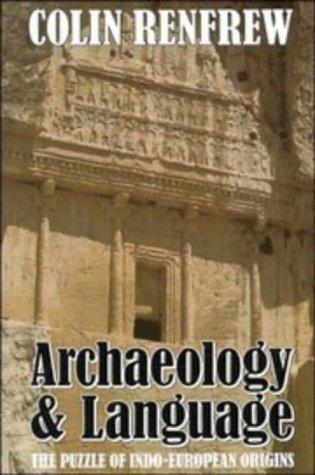
Submitted by Administrator on Thu, 30/08/2012 - 11:34
A recent study published in Science, and reported by news agencies including the BBC, backs a hypothesis about the origins of the Indo-European languages (including English) first proposed by the distinguished Cambridge archaeologist Professor Colin Renfrew (Lord Renfrew of Kaimsthorn) in 1987.
Professor Renfrew's Anatolian hypothesis suggested that modern Indo-European languages originated in Anatolia in Neolithic times, and linked their arrival in Europe with the spread of farming. The alternative, and for many years, the more accepted view was that Indo-European languages originated around 3,000 years later in the Steppes of Russia (the Kurgan hypothesis).
Researchers in New Zealand led by Dr. Quentin Atkinson of the University of Auckland have now applied research techniques used to trace virus epidemics to the study of language evolution. Using very different methods to those used by Professor Renfrew in the 1980s, they tested both the Anatolian and the Kurgan hypotheses, and their findings support the former.
Professor Renfrew comments:
"The hypothesis, which I put forward 25 years ago in my book Archaeology and Language, that the original home of the first Indo-European language was in Anatolia, was based on archaeological evidence that early farming (and the increase in population density that came with it) came to Europe from Anatolia. The argument was that the widespread adoption of a new language required a major economic and demographic change, such as the adoption of farming. Supporting evidence has come through since then that the wide regional distribution of several other language families (including Austronesian and Bantu) came about as the result of early farming dispersals.
The new and impressive finding by Quentin Atkinson and his colleagues is based on the phylogeographic analysis of purely linguistic data, and thus comes to much the same conclusion independently, using very different evidence. This gives striking support to the Anatolian hypothesis.
The traditional view that the homeland of the Proto-Indo-Europeans was in the steppe lands north of the Black Sea derives from the old misconception that the early population of that area were mounted warrior nomad pastoralists, who allegedly invaded Europe around the beginning of the Bronze Age. Few archaeologist now believe that. But this old myth dies hard. In reality, the development of mounted cavalry did not much pre-date the Scythians of the first millennium BC.
Much emphasis is traditionally placed by some Indo-Europeanists on just a few vocabulary terms, such as those for ‘horse’, ‘wheel’, chariot’, ‘cart’ etc. on the very reasonable grounds that these features make their appearance relatively late in the archaeological record. Since there are words for these things in the reconstructed Proto-Indo-European language, that language cannot (they argue) have dispersed before the invention, for instance, of the wheel. But these linguists sometimes use this method of linguistic palaeontology in a rather cumbersome way. They sometimes fail to acknowledge that with the invention of a new concept (e.g. the wheel), the new noun that was invented for it in the by-then different early Indo-European languages was often derived from existing concepts (e.g. ‘to rotate’ for the Latin rota, and similarly for the reconstructed Indo-European *kweklos, related to the Greek kyklos, ‘circle’). Circles and rotation have been known to humans for tens of thousands of years and cannot be used to date Proto-Indo-European!"
Follow the links for more on this item.
http://www.sciencemag.org/content/337/6097/957.abstract?sid=192102e8-a5bc-4744-ac5a-5500338ab381
